Clicking on any picture will take you to a larger version
| Gorky Park, nearly seven kilometers of open space in the heart of the city, is on the banks of the Moskva River. |
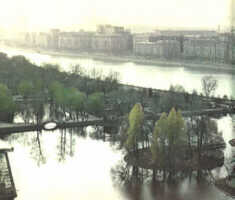
|
Clicking on any picture will take you to a larger version
| Gorky Park, nearly seven kilometers of open space in the heart of the city, is on the banks of the Moskva River. |

|
Left to right in the picture are: the Cathedrals of the Annunciation, Archangel, Assumption and the Bell Tower of Ivan the Great, standing 320 feet high. It is filled with storey upon storey of bells. The largest is 64 tons and the smallest crafted of delicate silver.
The Kremlin: ". . .a miniature of the largest country in the world."
(ref MOSCOW AND LENINGRAD OBSERVED,
by Georges Bortoli, translated by Amanda and Edward Thomson,
Oxford University Press, 1975)
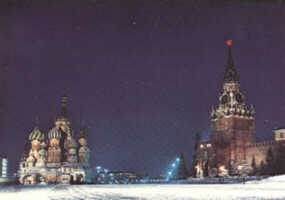
"It is without a doubt the most original monument in the world."
--Theophile Gautier
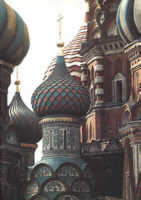
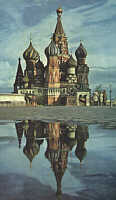 The Cathedral of Basil the Blessed
is at the southern end of Red Square, and opposite the Saviour Tower,
a main gate to the Kremlin. The cathedral is composed of eight
chapels, each capped by a uniquely decorated onion dome, all built
around a central church.
The Cathedral of Basil the Blessed
is at the southern end of Red Square, and opposite the Saviour Tower,
a main gate to the Kremlin. The cathedral is composed of eight
chapels, each capped by a uniquely decorated onion dome, all built
around a central church.
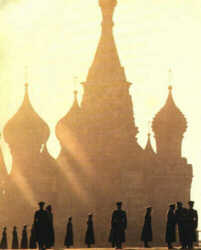
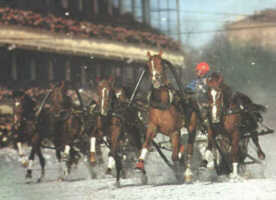
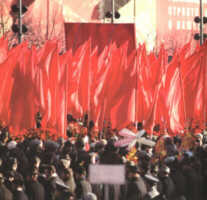 (left) How's this for horse racing? Where the weather's
extremely cold much of the year, people learn to accomodate
and carry on outdoors anyway!
(left) How's this for horse racing? Where the weather's
extremely cold much of the year, people learn to accomodate
and carry on outdoors anyway!
(right) Many of you know, this used to be a common sight on Mayday in the old
Soviet Union.
Major alterations in 1956-58 resulted in air conditioning, provided by
water from an artesian well nearby.
There are 2200 plush red seats in the auditorium of gold and white
decoration.
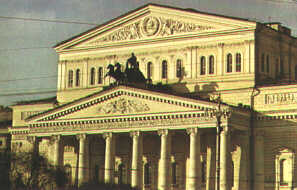
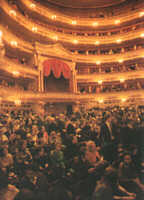 The Bolshoi Theatre: There have been
performances at the Bolshoi (Grand) Theatre since 1825. This is an
example of classical Russian architecture. The building has suffered
its misfortunes, burning down in 1853. The 1856 reconstruction
is the now familiar structure that theatre goers of today
are accustomed to. World War II also took its toll; the building was
damaged by a German bomb.
The Bolshoi Theatre: There have been
performances at the Bolshoi (Grand) Theatre since 1825. This is an
example of classical Russian architecture. The building has suffered
its misfortunes, burning down in 1853. The 1856 reconstruction
is the now familiar structure that theatre goers of today
are accustomed to. World War II also took its toll; the building was
damaged by a German bomb.
| Culture or Cliche? | ||
|---|---|---|
| SAMOVAR!? | St. Petersburg | Russian Art |
| Onion Domes | Moscow | Firebird |
|
Coming soon: Russian Blue |
Coming soon: Rasputin |
Coming soon: Tchaikovsky |
|
Back to The Russians are Here! |
| Gordeeva and Grinkov |
| Ilia Kulik |
| Links |
| Rings |
| Awards |
14.02.04